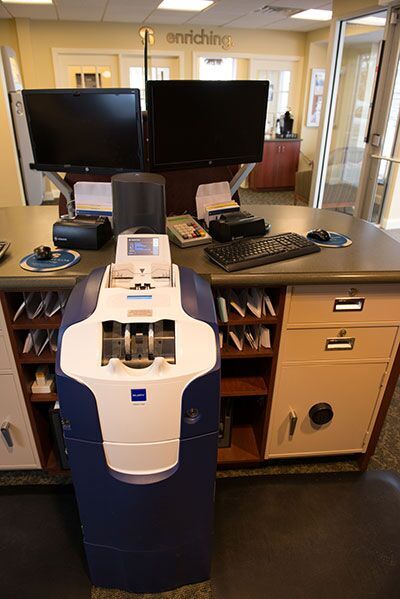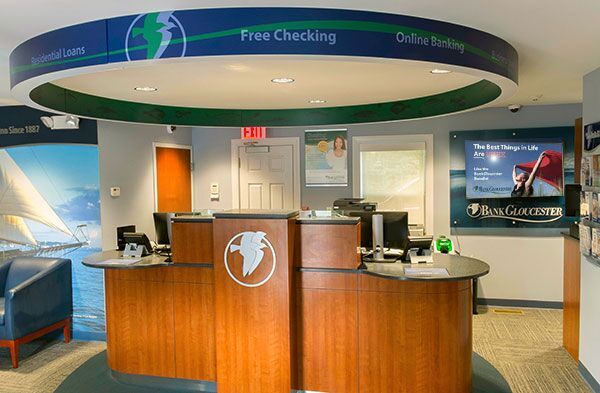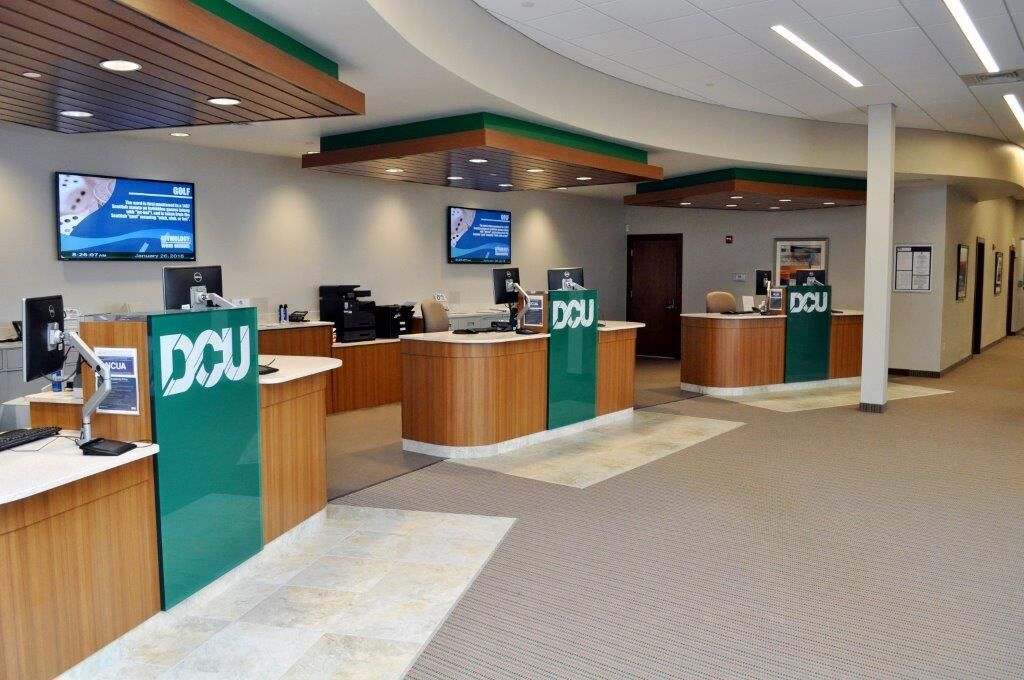Like many other parts of the credit union business, the branch model is rapidly abandoning traditional practices, opting instead for innovative, new strategies that can satisfy members who are busier, choosier and more tech-savvy than ever before.
Many of those strategies are more experimental than practical, but experts say the best forward-thinking credit unions are embracing five key must-haves to keep their branches competitive.
1. Small footprints. Branches are still an important part of the member experience – 43% of people visit them at least 10 times a year, according to a recent survey of more than 2,000 consumers by scheduling firm TimeTrade. Branches are shrinking, however.
The average branch is 2,116 square feet, according to a recent study by the Louisville, Ky.-based digital marketing firm Codigo. But Mark Charette, CEO of the Bloomfield, Conn.-based Solidus, which specializes in branch construction, said many of the projects his firm is seeing these days are 800 to 1,500 square feet. Private offices are often gone in new branches, he said, as is much of the room traditionally reserved for back-office operations, which is streamlining and consolidating as well. Much of the shrinkage is driven by a desire to save money, Charette noted.
John Smith, CEO of the Chandler, Ariz.-based DBSI, which also specializes in branch construction, said his firm is designing locations as small as 400 square feet – a hair bigger than the average hotel room. Cash isn't the only motivation, though.
“If you’re needing 4,000 square feet or 4,500 square feet, guess what? You’re not going to get close to the consumer,” he explained. “You’re going to need a big chunk of land. You’re going to need a corner spot. Become more like Starbucks and just build 1,500-, 1,900-square-foot locations. Get closer to the consumer.”
 2. Touch screens. Paper brochures are dead. Forward-thinking credit union branches use touch screens to make members aware of all they have to offer, experts said.
2. Touch screens. Paper brochures are dead. Forward-thinking credit union branches use touch screens to make members aware of all they have to offer, experts said.
“The way most people think you’re going to discover how a credit union can help you through life's journey is you have some static posts on the wall that talk about a rate,” Smith explained. “You have brochures that I’m only going to go look at if I have a need already. And then you get some frontline folks that are supposed to probe to a need while you’re doing a transaction, and then outline solutions to meet that need. All of those different methodologies don't work. No one looks at a brochure. The stuff on the walls becomes static. The people at the frontline, they don't want to ask any questions. They think they’re butting into the privacy of the member.”
Smith said from a design perspective, information typically included in brochures is best offered on screens that are front and center in the branch. Screens near waiting areas should highlight the credit union's mission, what it's doing for the community, and how it can make the member's life easier, because that's where new, onboarding members often sit.
Touch screens aren't just appearing in large credit unions. The Laramie, Wyo.-based UniWyo Federal Credit Union, which has $271 million in assets and about 24,000 members, recently made the move when it took over a 20-year-old former bank space. UniWyo extensively renovated the place, which included purging paper brochures from the lobby, Vice President of Marketing Mindy Uitterdyk explained.
“At each of the teller pods we have a large vertical screen that isn't interactive and rotates through different advertisements,” she said. “Then, at each of the pods we also have a tablet so you can click through all of the brochures.”
Members can email themselves the brochures too, Uitterdyk said.
 3. No more velvet ropes. Shuttling everybody into a roped-off teller line is what old fashioned branches do, experts said. Modern branches ditch the line and pigeon-holed work roles, opting for greeters and universal bankers instead. Nearly all of the new branches Solidus now builds for clients have dialogue towers, pods and/or advanced terminals.
3. No more velvet ropes. Shuttling everybody into a roped-off teller line is what old fashioned branches do, experts said. Modern branches ditch the line and pigeon-holed work roles, opting for greeters and universal bankers instead. Nearly all of the new branches Solidus now builds for clients have dialogue towers, pods and/or advanced terminals.
“Consumers are, for the most part, uncaring about whether or not a bank branch has a cafe-style environment and report it has no influence on their decision of where they bank,” TimeTrade said in its report.
But they do care about whether they have to stand in line – 64% of respondents said they’re only willing to wait less than 10 minutes at a branch, the study said.
For UniWyo, traditional teller lines were among the first things to go during its renovation. Pods now stand underneath an atrium area.
“Our employees can stand up and take care of a transaction, or if they need to do something more intensive with a member, they can sit down right there,” Uitterdyk said, adding that private meetings take place in corner glass offices.
 4. Shorter transactions. Modern branches do everything they can to make simple transactions take as little time as possible. The Marlborough, Mass.-based Digital Federal Credit Union, for example, is streamlining transactions with e-teller technology that scans checks at the time of deposit rather than keying it in. The decision was part of the $6.8 billion, 545,000-member credit union's effort to transform its branch footprint, according to Regional/Branch Operations Manager Michael Caissey.
4. Shorter transactions. Modern branches do everything they can to make simple transactions take as little time as possible. The Marlborough, Mass.-based Digital Federal Credit Union, for example, is streamlining transactions with e-teller technology that scans checks at the time of deposit rather than keying it in. The decision was part of the $6.8 billion, 545,000-member credit union's effort to transform its branch footprint, according to Regional/Branch Operations Manager Michael Caissey.
“We really want our frontline staff, specifically our tellers, to have a little bit more conversation with our members,” he said. “One of our primary goals is to see different ways that we can save our members money. By not having to manually put in information from the checks and having to do all that data entry piece of it, by just scanning and doing a couple of clicks, that frees open the conversation to talk about other things.”
5. Long-term thinking. “We read a lot of different articles about how the branches are kind of fading away, that members aren't really coming to a branch to do things,” Caissey said. “That is not in our experience at all. In fact, if anything, our transactions continue to climb.”
The number of credit union branches in the United States may indeed be falling and the number of transactions done at those that remain may be dropping, but forward-thinking credit unions aren't putting their branches in hospice care; they’ve given them a job to do. To Mark Charette, branches are an antidote to automation and a manifestation of a commitment to human relationships.
© Touchpoint Markets, All Rights Reserved. Request academic re-use from www.copyright.com. All other uses, submit a request to [email protected]. For more inforrmation visit Asset & Logo Licensing.






